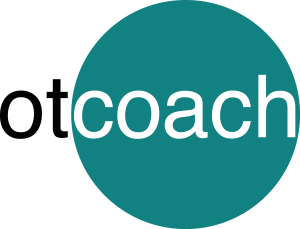 First published in Occupational Therapy News December 2013
First published in Occupational Therapy News December 2013
You may be wondering why I am writing about using Circus within OT as you might know me for my work within Occupational Therapy and Coaching! In the Spring of 2013, I received an email from the “No Fit State Circus” in Cardiff (It took me a while to remember that I had subscribed to their newsletter a couple of years ago, as I was doing a series of paintings and exploring the metaphor of tightrope walking and juggling in coaching!). I nearly deleted the email , but a quick glance made me sit up and take notice…an OT from the US was coming to Cardiff to teach circus as a therapeutic tool! I am fascinated by areas of emerging practice and how OT can be integrated with other fields and was so really pleased that I could attend this rare opportunity.
Jill Maglio is completely inspirational and described circus as her “personal meaningful occupation “ It’s her work, her self-care and her leisure. After qualifying as an OT, Jill collaborated with Latrobe University and Westside Circus in Melbourne to bring circus and Occupational Therapy together (Maglio J, McKinsky C 2008). This project and other studies showed how circus skills promote the acquisition of life skills as well as improve cognitive, sensory and physical functioning – Holistic Circus Therapy (HCT) was born.
As Jill introduced Holistic Circus Therapy to the room of course participants, it became clear that I was the circus newbie. Surrounded by circus performers, teachers and facilitators, I quickly became aware that my own physical skills, coordination, balance and movement, were quite lacking (to say the least) and several years of siting at the laptop had definitely taken its toll! Within a few hours, I was reminded why I love OT, how powerful meaningful occupation is and how adaptable activities really can be.
We explored the history of circus from it’s origins where marginalised individuals with unique skills, came together to perform, through to new age circus such as Cirque du Soliel. Social circus or Community circus is very different and is more about the process of circus, rather than the end product:
“A combination of physical activity, interpersonal dialogue and creative expression, alongside teamwork, and perseverance, enables community circus to promote well-being and increases the acquisition of “life skills” (Maglio and McKinstry, 2008).
Jill also cites the work of Reg Bolton “Why Circus Works: how the values and structure of circus make it a significant developmental experience for young people” (2004). Having looked, albeit briefly, at this PhD thesis, I am reminded again of how much knowledge exists outside of the domain of Occupational Therapy, that we really could benefit from.
During day one, we were introduced to the core components of circus strategies and how they can be used to improve occupational skill, capacity and engagement. These include:
• Acrobatics, which helps develop core, upper and lower limb strength and flexibility, body awareness, trust, positive risk-taking, giving and receiving physical support.
• Acrobalance, which promotes team work, body awareness, sensory processing, problem solving, trust, safe/positive physical interaction. Overall increasing mastery, self-efficacy and esteem.
• Manipulation (juggling, hula hooping) and how these can be graded and adapted and provide opportunities to improve coordination, gross, and fine motor skills. How they also promote rapid thinking, reaction, persistence and practice.
• Balance-based activities which promote reduced fear of heights and physical limits, peer support and trust of self and others, awareness of self in relation to others. These also assist vestibular and other sensory processing.
• Performance, which promotes creativity, collaboration, breaking down of inhibitions, exploration of theatrical themes, giving and receiving social support, experience of taking on different roles, development of different characters/roles, brainstorming and problem-solving (Maglio and McKinstry, 2007)
On the second day, parts of my brain were really tested, parts which I forgot existed. Did you know the maths that is involved in juggling? Jill’s colleague, Craig Quat has developed a system of adapted juggling and associated equipment, which is completely brilliant. I challenged Craig to teach me to juggle, which if you do it normally, takes months. He taught me in 27 seconds.
Some of this may not be “news” to those of you working with children as I know several Paediatric OTs who use some circus activities in their OT work, but I had several exciting insights:
• Circus performers and facilitators are highly skilled, adaptable and are willing to take risks. I was told firmly that “in circus we never set boundaries or limits – nothing is impossible”. This is a mind-set worth pondering.
• Amongst this extensive circus community, there is a potential army of people who, if supported by an OT, could really expand the reach of OT and enable us to help many, many more people
• As a profession we would really benefit from looking outside of OT more often and learning from other “worlds”, not just other professional or medical disciplines
• Context and meaning is so important. It’s one thing to offer some circus based activities as part of our OT tool box, but it’s quite another to be part of real circus with all the benefits of mastery, performance and a sense of community.
• I really need to buy a hoola hoop and step away from my laptop more often.
References
Maglio J, McKinstry C (2008) Occupational therapy and circus: Potential partners in
enhancing the health and well-being of today’s youth Australian Occupational Therapy Journal (2008) 55, 287–290
Bolton R (2004) “Why Circus Works: how the values and structure of circus make it a significant developmental experience for young people” Phd Thesis Murdoch University
Jen Gash, Occupational Therapist and Coach jen@otcoach.com www.otcoach.com or www.courageouscreativeots.com

